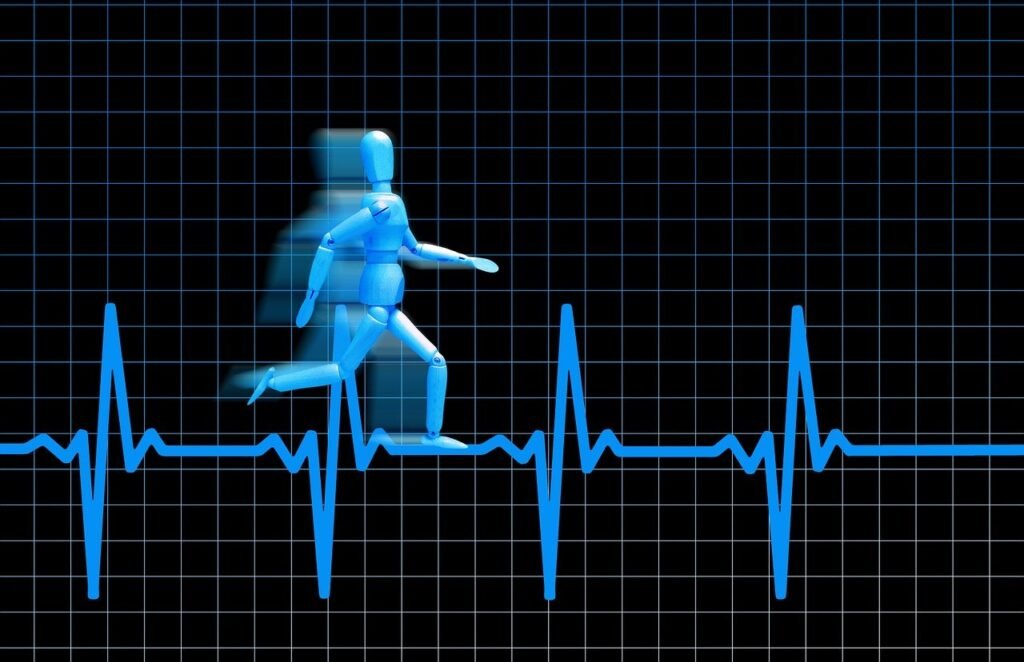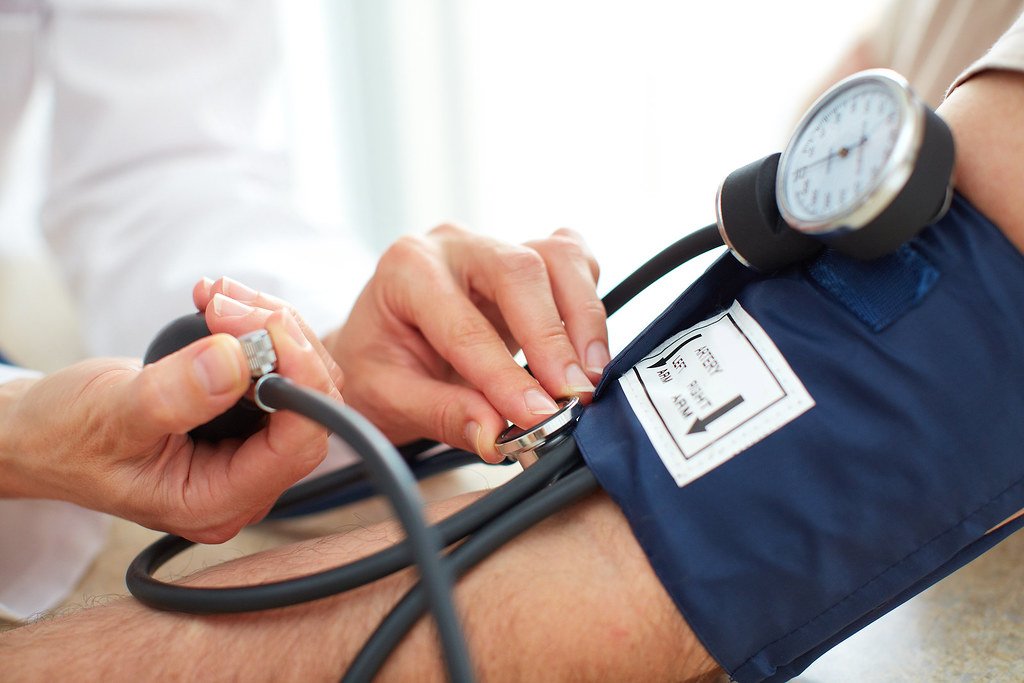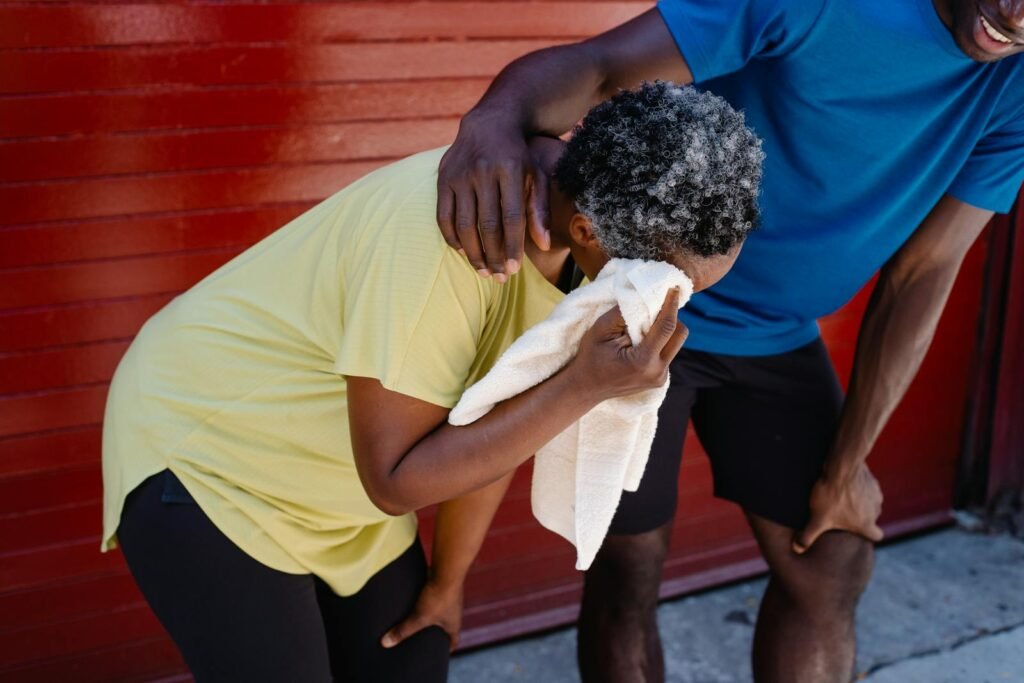Tips and Tricks to Keep Your Heart and Body in Check While Exercising
Introduction
Exercise is the secret sauce to a healthy lifestyle, offering a buffet of benefits from a strong heart to a sharper mind. Picture it: regular workouts not only boost your cardiovascular health but also elevate your mood, reduce anxiety, and keep those pesky chronic diseases at bay. Sounds like a win-win, right?
But here’s the kicker: while we’re all for pushing limits, it’s crucial to know when to hit the brakes. Overdoing it can turn a good thing into a risky business. Monitoring your body’s vital signs during workouts is like having a built-in safety net, ensuring you reap all the rewards without the downsides.
Think of your heart rate as your fitness GPS. It guides you on how hard you’re pushing. Staying within your target heart rate zone means you’re getting the most bang for your buck—burning calories, strengthening your heart, and feeling that awesome post-workout high without risking burnout.
Blood pressure is another key player. When you exercise, your systolic pressure (the top number) might rise a bit, but your diastolic pressure (the bottom number) should stay pretty steady. Keeping these numbers in check ensures your heart isn’t working overtime.
Let’s not forget oxygen saturation and body temperature. Your SpO2 levels should stay above 95% to keep your muscles and organs happy. And if you start feeling like a hot potato with a body temp soaring above 39°C (102.2°F), it’s time to cool down.
In this article, we’ll dive into the safe zones for these vital signs during exercise, backed by research and expert advice. By keeping an eye on these metrics, you can enjoy the thrill of the workout without the spills. So, let’s get moving, safely!
Heart Rate: Finding Your Safe Zone
Let’s talk heart rate—the rhythm that keeps you grooving through your workouts. Understanding your maximum heart rate (MHR) is like knowing the speed limit on a freeway. It helps you determine how hard you can push without veering into dangerous territory.
So, how do you figure out your MHR? It’s easy-peasy with this simple formula:
MHR=220−age
For instance, if you’re 30 years young, your max heart rate would be:
220−30=190 beats per minute (bpm)
Now, hitting 190 bpm isn’t the goal—unless you’re going for the gold in overexertion. The real magic happens when you work within your target heart rate zones. These zones help you maximize benefits without overdoing it.
Here’s the scoop:
Moderate-intensity exercise: 50-70% of your MHR
Vigorous-intensity exercise: 70-85% of your MHR
For our 30-year-old friend, the target heart rate for moderate exercise would be:
95 to 133 bpm
And for vigorous exercise:
133 to 161.5 bpm
Sticking within these ranges ensures you’re getting a great workout without crossing the line into exhaustion or injury. It’s like driving at a comfortable speed where you’re in control and enjoying the ride, rather than careening down the highway with your foot glued to the gas pedal.
Why is this important? Exercising within your target heart rate zone optimizes cardiovascular benefits, helps burn calories efficiently, and reduces the risk of heart-related issues. Plus, it keeps your workouts fun and sustainable. You’ll feel energized, not wiped out, and more likely to stick with your fitness routine.
So, next time you lace up those sneakers, remember to keep an eye on your heart rate. It’s your best workout buddy, helping you find that sweet spot where you’re challenging yourself but still staying safe. Happy exercising!
Research and Recommendations
When it comes to getting the most out of your workout while staying safe, it’s not just about breaking a sweat—it’s about smart sweating. That’s where the American Heart Association (AHA) and the Centers for Disease Control and Prevention (CDC) step in with their top-notch guidelines.
The AHA and CDC are like your personal fitness gurus, recommending target heart rate zones to help you optimize cardiovascular benefits and minimize risks. Think of these zones as the golden lanes on your fitness highway, guiding you to drive at the perfect pace.
So, what does the research say? Plenty! Studies have shown that sticking to your target heart rate zones (50-70% of your MHR for moderate exercise and 70-85% for vigorous exercise) does wonders for your heart. Imagine your heart as a well-tuned engine. When you stay within these zones, you’re giving it the perfect workout—strengthening it, improving efficiency, and significantly reducing the risk of cardiovascular events like heart attacks or arrhythmias during exercise.
For instance, a landmark study published in the Journal of the American College of Cardiology found that individuals who monitored and maintained their heart rate within these recommended zones experienced fewer cardiac events and enjoyed better overall heart health. It’s like giving your heart a protective shield while you work out.
The AHA also highlights that regular exercise within these zones can help manage blood pressure, improve cholesterol levels, and boost overall cardiovascular fitness. Plus, it keeps your energy levels high and helps you avoid that post-workout crash.
Incorporating these recommendations into your fitness routine can turn your workouts into a powerhouse of health benefits. By keeping your heart rate in check, you’re not just exercising—you’re investing in a longer, healthier, and happier life. So, strap on that fitness tracker, hit your target zones, and enjoy the ride to better health!
Blood Pressure: Balancing the Pressure
When you’re sweating it out, your blood pressure is like the unsung hero working behind the scenes. It’s crucial to keep an eye on it to ensure your workout is both effective and safe. Blood pressure naturally fluctuates during exercise, but there are limits to watching to avoid turning your gym session into a risky endeavor.
Safe Limits During Exercise
Let’s break it down. Blood pressure is measured in two numbers: systolic (the top number) and diastolic (the bottom number). When you exercise, your systolic pressure, which measures the force of blood against artery walls when your heart beats, tends to rise. It’s normal for it to increase because your heart is working harder to pump blood to your muscles.
But here’s the kicker—your systolic BP shouldn’t exceed 200 mmHg. Think of it as the maximum safe speed limit for your heart. Going beyond this can be like driving too fast on a winding road; it’s dangerous and can lead to accidents, or in this case, cardiovascular events.
On the flip side, your diastolic pressure, which measures the force of blood in your arteries when your heart rests between beats, should remain relatively stable. It’s like the steady foundation keeping everything balanced. During exercise, it should stay below 90 mmHg. If your diastolic pressure starts to climb, it could indicate that your heart and blood vessels are under too much strain.
Research Insights
So, what do the experts say? According to research published in the Journal of Hypertension, excessive increases in blood pressure during exercise can lead to adverse cardiovascular events, especially in individuals with hypertension. It’s like adding extra weight to an already heavy load—eventually, something’s got to give.
This research underscores the importance of regular monitoring and maintaining blood pressure within safe limits. By doing so, you’re not just playing it safe; you’re optimizing your workout for better heart health.
The American Heart Association (AHA) also backs this up, highlighting that monitoring blood pressure during exercise is vital for anyone, but especially for those with pre-existing conditions like hypertension. It’s like having a roadmap to ensure you’re on the right path to fitness without hitting any dangerous detours.
How to Monitor Your Blood Pressure
Here’s the fun part: how do you keep tabs on your blood pressure while working out? It’s easier than you might think. Many modern fitness trackers and smartwatches can monitor your blood pressure in real-time. Strap one on, and you’ve got a personal health assistant right on your wrist.
For a more traditional approach, you can use a portable blood pressure monitor. Take a reading before, during, and after your workout to see how your body responds. If you notice your systolic BP nearing 200 mmHg or your diastolic BP creeping up past 90 mmHg, it’s a sign to dial it back a notch.
Tips for Keeping Blood Pressure in Check
Warm-Up and Cool Down: Start with a gentle warm-up to gradually increase your heart rate and blood pressure. Cooling down helps bring your vitals back to normal.
Stay Hydrated: Dehydration can spike your blood pressure. Drink water before, during, and after your workout.
Breathe Easy: Focus on your breathing. Holding your breath during exertion can cause blood pressure to rise.
Know Your Limits: Listen to your body. If you feel dizzy, lightheaded, or unusually short of breath, stop and rest.
Other Vital Signs: Keeping a Close Watch

When it comes to exercise, there’s more to watch than just your heart rate and blood pressure. Think of your body as a high-performance machine with multiple gauges that need monitoring. Let’s dive into some other vital signs that are crucial for a safe and effective workout.
Oxygen Saturation (SpO2)
Oxygen saturation, or SpO2, is like the fuel gauge for your muscles and organs. It measures how well oxygen is being delivered throughout your body. Ideally, your SpO2 levels should stay above 95% during exercise. If they drop below this threshold, it’s a red flag that your muscles and organs aren’t getting enough oxygen, which can lead to fatigue and even dizziness. In such cases, it’s wise to dial down the intensity or take a break to let your body recover.
Respiration Rate
Breathing is your body’s way of fueling up on oxygen and expelling carbon dioxide. At rest, you should be taking 12-20 breaths per minute. But when you’re breaking a sweat, it’s normal for this rate to ramp up. However, even during intense workouts, your respiration rate should not exceed 40 breaths per minute. If you find yourself gasping for air like a fish out of water, it’s a sign to slow down. Controlled breathing helps maintain your energy levels and keeps your body running efficiently.
Body Temperature
Just like a car engine, your body heats up as it works harder. While some increase in temperature is normal, your body temperature should not exceed 39°C (102.2°F). Going beyond this can indicate heat stress or heat stroke, both of which require immediate attention. Signs to watch out for include excessive sweating, nausea, dizziness, and a rapid pulse. Staying hydrated and taking breaks in a cool environment can help manage your body temperature.
Expert Advice
The American College of Sports Medicine (ACSM) is the go-to guru for all things exercise-related. They stress the importance of monitoring these vital signs, particularly for older adults and those with pre-existing health conditions. Keeping an eye on your SpO2, respiration rate, and body temperature ensures your exercise routine is both safe and effective, promoting long-term health benefits.
Practical Tips for Monitoring Vital Signs
Use Technology: Modern fitness trackers and smartwatches can monitor your SpO2 levels, heart rate, and even estimate your respiration rate. They’re like having a personal trainer and health monitor rolled into one.
Stay Hydrated: Drinking plenty of water helps regulate your body temperature and keeps your muscles functioning optimally.
Listen to Your Body: Pay attention to how you feel. If something doesn’t feel right, it probably isn’t. Don’t ignore warning signs like dizziness, excessive fatigue, or shortness of breath.
Warm-Up and Cool Down: Gradually increase and decrease the intensity of your workouts. This helps your body adjust and reduces the risk of injury or overexertion.
Recognizing Overexertion
Pushing your limits can feel empowering, but it’s crucial to recognize when you’ve pushed too far. Overexertion is your body’s way of telling you to pump the brakes. Ignoring these signs can lead to serious health issues, so let’s get familiar with the red flags of overexertion.
Signs of Overexertion
Dizziness or Lightheadedness: Feeling woozy is your brain’s way of saying, “Hold up, I need a moment!” If you start feeling dizzy, stop and rest. Your body needs time to catch up and regain its balance.
Extreme Shortness of Breath: Hitting the “out of breath” stage is expected, but gasping for air is a sign to slow down. Your lungs are working overtime and need a break.
Chest Pain or Pressure: This is a big one. Chest pain or a feeling of pressure should never be ignored. It could be a sign of something serious, like a heart problem. Stop immediately and seek medical help if this occurs.
Nausea or Vomiting: If your workout makes you feel sick to your stomach, it’s a clear sign of overdoing it. Take a breather and sip some water to help your body recover.
Excessive Sweating or Clammy Skin: Sweating is normal, but if you’re drenched and your skin feels clammy, it might be a sign of overheating or dehydration. Find a cool spot, drink water, and take a break.
Muscle Cramps or Pain Beyond Usual Soreness: Soreness after a good workout is normal, but sharp pain or cramps are not. These could indicate muscle strain or injury. Stop the activity and gently stretch the affected muscles.
Individual Considerations
Everyone’s fitness journey is unique, and individual health conditions can significantly affect how you should approach exercise.
Pre-existing Conditions: If you have heart disease, hypertension, or other chronic conditions, it’s essential to consult with a healthcare provider to determine your safe exercise limits. Personalized advice can prevent overexertion and ensure your workout is both effective and safe.
Medications: Some medications can affect how your heart rate and blood pressure respond during exercise. For instance, beta-blockers slow your heart rate, while diuretics can lead to dehydration. Always check with your healthcare provider about how your medications might impact your workout. It’s all about finding that sweet spot where you’re getting the benefits without the risks.
Practical Tips to Avoid Overexertion
Warm-Up and Cool-Down: Always start with a gentle warm-up to prepare your body and end with a cool-down to help it recover.
Stay Hydrated: Drink plenty of water before, during, and after your workout. Dehydration can sneak up on you and exacerbate overexertion symptoms.
Pace Yourself: Increase your workout intensity gradually. Rome wasn’t built in a day, and neither is fitness. Listen to your body and give it time to adapt.
Monitor Your Vitals: Use fitness trackers to keep an eye on your heart rate, oxygen levels, and other vital signs. They can be your best ally in avoiding overexertion.
Recognizing and Avoiding Overexertion
When it comes to working out, knowing when to stop is just as important as knowing when to push harder. Recognizing the signs of overexertion can save you from potential injuries or health complications. So, what are the big no-nos? If you experience dizziness, extreme shortness of breath, chest pain, nausea, excessive sweating, or muscle cramps that go beyond typical soreness, it’s time to hit the brakes. These symptoms are your body’s SOS signals, and ignoring them can lead to serious consequences.
But don’t worry, you can still turn things around and get back to a healthy state. First and foremost, stop the activity immediately. Find a cool, shaded area to rest and catch your breath. Hydrate with water or an electrolyte drink to replenish what you’ve lost through sweat. Gentle stretching can help ease muscle cramps and improve circulation.
If your symptoms are severe, it’s crucial to seek medical attention right away. For less severe cases, take it easy for the rest of the day and avoid strenuous activities. Use this downtime to reflect on what might have caused the overexertion. Was it pushing too hard too soon? Skipping warm-ups or cool-downs? Once you identify the cause, you can adjust your routine to prevent it from happening again.
Next time, ensure you have a proper warm-up before diving into intense workouts. Gradually increase the intensity and listen to your body’s cues. Cooling down is just as important—it helps your heart rate and blood pressure return to normal and reduces muscle stiffness.
Remember, consistency and gradual progression are key to a safe and effective workout routine. Always consult your doctor or a medical professional before making any significant changes to your exercise regimen, especially if you have underlying health conditions. They can provide personalized advice to help you achieve your fitness goals safely. So, stay vigilant, stay hydrated, and keep your workouts fun and safe!
Conclusion
Wrapping up, let’s remember that exercising smartly is the golden rule for reaping maximum benefits while staying safe. Monitoring your vital signs—heart rate, blood pressure, oxygen saturation, and body temperature—is like having a backstage pass to your body’s performance. It ensures you’re in the safe zone, enjoying the perks of physical activity without crossing into dangerous territory.
Think of your heart rate as your workout DJ, setting the tempo to keep you in the groove. By staying within your target heart rate zone, you’re jamming to the perfect beat that boosts your cardiovascular health and burns calories efficiently. On the flip side, ignoring your heart rate can lead to overexertion, which is like dancing too hard and ending up with sore feet—or worse, a health scare.
Blood pressure, the unsung hero, plays a crucial role too. Keeping your systolic BP below 200 mmHg and diastolic BP under 90 mmHg ensures your heart isn’t overworked. It’s like driving within the speed limit on a scenic route—you enjoy the journey without risking a crash.
Oxygen saturation (SpO2) and body temperature are your body’s fuel and thermostat. SpO2 above 95% means your muscles and organs are getting enough oxygen, while a body temperature below 39°C (102.2°F) keeps you cool and safe from heat stress or stroke.
But what if you hit the danger zone? Recognizing signs of overexertion like dizziness, extreme shortness of breath, chest pain, nausea, excessive sweating, and severe muscle cramps is crucial. These are your body’s SOS signals, telling you to slow down and take care.
To flip the script and return to a healthy state, stop the activity, rest, hydrate, and stretch. If symptoms are severe, seek medical attention. And remember, always consult your doctor before making significant changes to your exercise routine, especially if you have underlying health conditions. They can offer tailored advice to help you smash your fitness goals safely.
So, stay vigilant, listen to your body, and keep your workouts fun and safe. Happy exercising!
References
When it comes to understanding the safe boundaries for exercise, it’s crucial to rely on solid research and expert recommendations. Here are some key references that support the guidelines discussed in this article:
American Heart Association (AHA)
The AHA provides comprehensive guidelines on target heart rates for different exercise intensities. According to their recommendations, maintaining heart rate within 50-85% of your maximum heart rate can optimize cardiovascular benefits while minimizing risks. These guidelines are based on extensive research and are widely recognized as the gold standard for safe exercise practices.
Reference: American Heart Association. (2020). Target Heart Rates Chart. Retrieved from AHA website.
Centres for Disease Control and Prevention (CDC)
The CDC offers detailed information on exercise intensity and how to measure it. Their resources emphasize the importance of staying within recommended heart rate zones to ensure a safe and effective workout. The CDC’s guidelines are based on current research and public health expertise, making them a trusted source for exercise recommendations.
Reference: Centers for Disease Control and Prevention. (2020). Exercise Intensity. Retrieved from CDC website.
Journal of Hypertension
A study published in the Journal of Hypertension highlights the risks associated with excessive blood pressure increases during exercise. The research indicates that maintaining blood pressure within safe limits is crucial for reducing the risk of cardiovascular events, particularly in individuals with hypertension. This study underscores the importance of monitoring blood pressure during physical activity.
Reference: Journal of Hypertension. (2021). Blood Pressure Response During Exercise. Retrieved from Journal of Hypertension.
American College of Sports Medicine (ACSM)
The ACSM provides guidelines for exercise testing and prescription, emphasizing the importance of monitoring vital signs, especially in older adults and those with pre-existing conditions. Their recommendations are grounded in scientific research and are aimed at ensuring exercise is both safe and effective. The ACSM’s guidelines are a valuable resource for anyone looking to create a balanced and health-focused exercise routine.
Reference: American College of Sports Medicine. (2020). ACSM’s Guidelines for Exercise Testing and Prescription. Retrieved from ACSM website.
Disclaimer:
This article is not medical advice and does not replace consultation with healthcare professionals. Always consult your doctor before starting any new exercise program, especially if you have underlying health conditions.












































Discussion about this post